By Carolyn Webb
In recent years, reports have been rife of illegal tobacco being sold under the counter in Melbourne shops.
But 130 years ago, tea was a commodity that addicts of a brew sought to buy on the cheap, and a Melbourne grocer was caught selling counterfeit tea leaves.
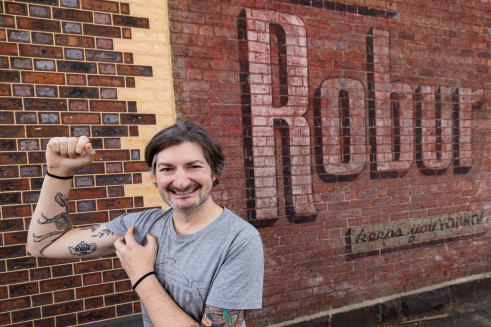
Ghost sign chaser Sean Reynolds, in Carlton North, had a Robur tea image tattooed on his arm.Credit: Jason South
It’s just one of the many stories Sean Reynolds has uncovered when researching Melbourne’s ghost signs, those faded, painted advertisements in inner suburbs for mostly defunct brands, in this case involving the popular brand, Robur.
In the incident, in May 1894, a salesman in a Richmond shop falsely stated to tea merchants, acting under cover, that the loose-leaf tea he had mixed for them from two chests was Robur tea.
The merchants, who were licensed to sell Robur tea, won a court injunction to stop the sale of the falsely branded leaves.
Reynolds works as a Royal Historical Society of Victoria social media and marketing officer. But in his spare time, his passion is to photograph and research ghost signs such as the one pictured in Macpherson Street, Carlton North.
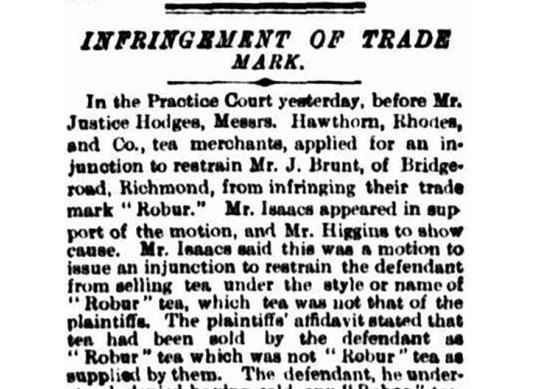
An article from The Argus, June 12, 1894, about a Richmond grocer that tried to pass-off loose-leaf tea as being the Robur brand.Credit: Trove
He posts the results on his Instagram page, @melbourne_ghostsigns, which has 750 posts and more than 26,000 followers.
Many of the ghost signs are from around inner Melbourne but he has ventured as far as Chiltern in north-east Victoria, and is soon to visit Mildura in the state’s north-west.
Reynolds developed such affection for the “whimsical” teapots and elegant lettering of the many Robur tea ads on Melbourne’s walls that he had the brand’s logo tattooed on his arm.
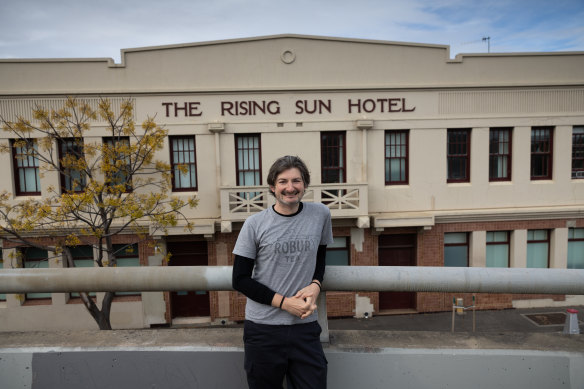
Sean Reynolds was intrigued by a tragic tale about the Rising Sun Hotel in Seddon, which is now apartments.Credit: Jason South
Robur was once a major tea importer; its multi-storey tea house, built in 1887, still stands in Southbank.
Reynolds, an American immigrant who grew up in Evansville, Indiana, says the ghost sign hobby has helped him get to know his new city, and each one “tells a story of Melbourne”.
Reynolds’ post on a ghost sign for Ansett Airlines led to reminiscences from the public. One woman wrote: “My Dad was Lady Ansett’s plumber for their Peninsula property. I learned to drive (very underage) there and got busted by the lady herself doing a cartwheel across her carpet, it was blue and luscious and I couldn’t help myself. I think I was 12 at the time and thankfully she found it amusing.”
One of Reynold’s posts tells a tragic tale linked to the now-closed Rising Sun Hotel, on Geelong Road in Seddon, near Footscray, now an apartment block.
One of the hotel’s 19th century publicans, Anne Dowd, migrated to Australia from impoverished Ireland in 1849.
A few years later, after the death of her first husband, Dowd married an Englishman, Cuthbert Harrison.
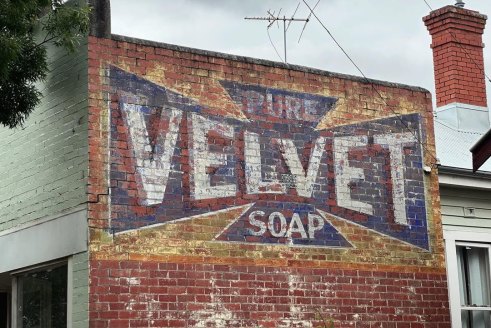
An old ad for Velvet soap, which is still sold.Credit: Sean Reynolds
Excerpts published online from Maureen Lane and Joan Carstairs’ book, Pubs, Punts and Pastures, said Dowd and Harrison had acquired land and several hotels in Melbourne’s inner west.
The properties included the Punt Inn and the Rising Sun Hotel. And the couple operated the punt, or ferry, across the Maribyrnong River, before there was a bridge.
But after Harrison died, Dowd discovered he had spent all their money and sold their properties. She fell into petty crime and died a pauper in Geelong Gaol.
Reynolds said the story haunted him. “It’s such a tragedy,” he said.
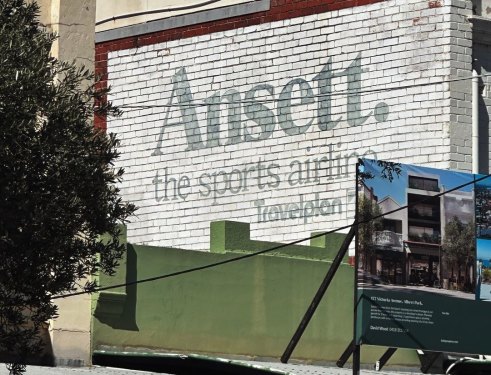
A ghost sign for the defunct Ansett Airlines.Credit: Sean Reynolds
Reynolds’ penchant for ghost signs shows no signs of fading. “It’s about the artistry of photography, unravelling a mystery and finding the story, and I love writing them up,” he said.
Reynolds, who runs a local history podcast called Past Lives, is writing a book on ghost signs that will be published by Scribe in October.
For Rare Book Week, on July 25 at the Victorian Archives Centre in North Melbourne, Reynolds will give a talk about North Melbourne ghost signs. Bookings are available here.